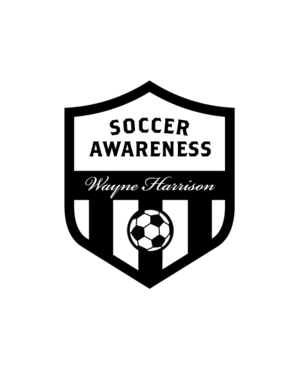Defensive Pressing to Push Up Without Touching the Ball
/This is part two of a full session on defensive pressing from the Soccer Awareness Training Center. In this session we are developing play from the back with inverted runs into "No Mans Land" central areas. Get the full series and more than 500 other drills and full training sessions in the Soccer Awareness Training Center.
This is a great session to teach the players and shows how they can push opponents back even when THE OPPONENTS have the ball.
We will try to push them back without even touching the ball ourselves. We start on the edge of our box we try to get our back three up to the half way line. Set Conditions will help us do this to start the process off.
Conditions:
Defending team cannot tackle.
Defending team CAN intercept a pass.
Attacking team must play 1 or 2 touches due to the fact defenders cannot tackle so opponents cant dribble 1 v 1.
Coaching Points:
Defenders press the ball as quickly as possible.
Try to stop the forward pass, try to force a pass across the field or backwards.
Defenders must recognize every opportunity to push up no matter how small a distance it may be.
Sometimes its 5 yards up 3 yards back for example depending on the position of ball and if there is pressure on it.
Try to intercept the pass and gain possession.
This session is teaching defenders how to push up and force the opponents back without touching the ball. The goal is to start on the edge of the box, the opponents have possession but by pressing and pushing up at the right times we force opponents back. Our aim is to get our back 3 up to the half way line. So this is moving approximately 40 yards up the field.
Start with equal numbers so success can be achieved.
v 7 plus the keeper. Set conditions are introduced to help the session. Coach to (E) and (10) presses to try to stop a forward pass. Defending team may sneak up 2 or 3 yards if (1) can delay.
Sliding up and across the field
(10) forces the sideways pass and this can also result in a pushing up a few yards from the back as well as pressing the ball. The coach is the target for the defending team to play to when they win the ball plus is a support player for the attacking team.
The longer the arrows the greater the distance travelled up the field each time
(3) Presses so well (B) has only a back pass to make. (8) and (10) are in passing lanes to stop a forward pass with an interception potentially. (3) positions to stop a pass to (A). As the ball travels this gives the team a real chance to get up several more yards. A the same time leave (E) offside.
Danger from a first time delivery from the coach to (A) or (C).
(10) Does not press the coach to then be out of position as the coach is too far away to stop a delivery. (3) presses inside to press (G), (8) moves up and across to press (F). If the coach passes to (D) then (2) can slide across quickly as will (8) and (10).
(E) is still offside but not interfering with play. (A) and (C) move wide to find more space and the coach plays to (C). The defending team now need to drop back and across and lose some ground. Midfield three condense back and across to where the ball is. Back 4 try to leave (E) offside still so don’t recover all the way goal-side. But still in good defensive shape.
















